Inside the First Android Wear Devices: LG G Watch & Samsung Gear Live Teardown
by Anand Lal Shimpi on June 30, 2014 4:50 PM EST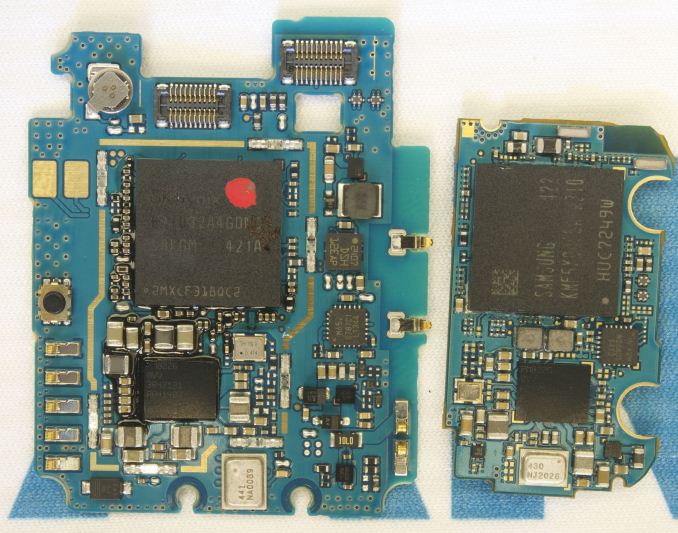
Last week at IO, Google gave attendees a choice of one of two Android Wear devices to take home and get experience with the platform. Although I personally opted for LG's G Watch (the display looked better), my friend James Bruce at ARM managed to get both and spent the next day taking them apart. James sent over high res pics of the result and gave us permission to post the images here (Update: ARM posted its own blog on the teardown here). I'm working on a review of Android Wear and the G Watch now (and yes, I have battery life data), but I hadn't yet taken it apart.
The G Watch turns out to be pretty easy to take apart. There are four Torx T5 screws on the back, removing them gives you access to its internals. The 400mAh battery is integrated into the back cover. ARM's teardown confirms 3.8V chemistry, resulting in a 1.52Wh total capacity.
In the photo above (left) you can see the thin gasket that runs around the perimeter of the G Watch, helping to give it its IP67 rating (fully sealed against dust, submergible in up to 1 meter of water for up to 30 minutes).
Two more screws hold the incredibly small PCB in place. The Qualcomm APQ8026 SoC (4 x Cortex A7 + Adreno 305 graphics) is underneath the Hynix DRAM device. There's a discrete Qualcomm PM8226 PMIC just south of the SoC.
On the flip side of the PCB we see Synaptics' touch controller (the same model used in the Moto X).
The Gear Live is also held together by four screws, although dismantling the watch takes a little more effort. The battery and heart rate monitor are both enclosed in the back of the watch. Samsung is also using 3.8V chemistry for its watch battery.
The logic board in the Gear Live is a bit more complex. There's a second layer stacked on the main logic board that also acts as an RF can.
We see the same APQ8026 SoC from Qualcomm below a Samsung DRAM device in a PoP stack.
Overall Samsung definitely has the more compact (and complex) internal PCB (the picture at the top of the article compares the two side by side), which makes sense given the company's relative head start in this space.
There's been a ton of innovation in the internal layout of smartphones over the years. As these are the very first Android Wear devices, it'll be interesting to see how the internal structure evolves over the coming years. One thing is for sure: those batteries are going to have to get thinner, or find a new place to live. Perhaps split up and distributed into a watch band?


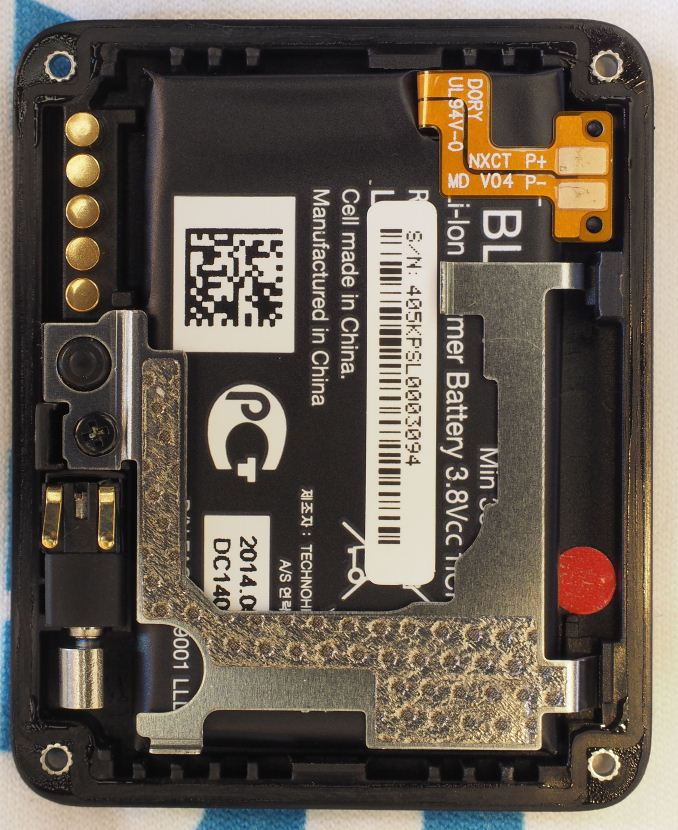
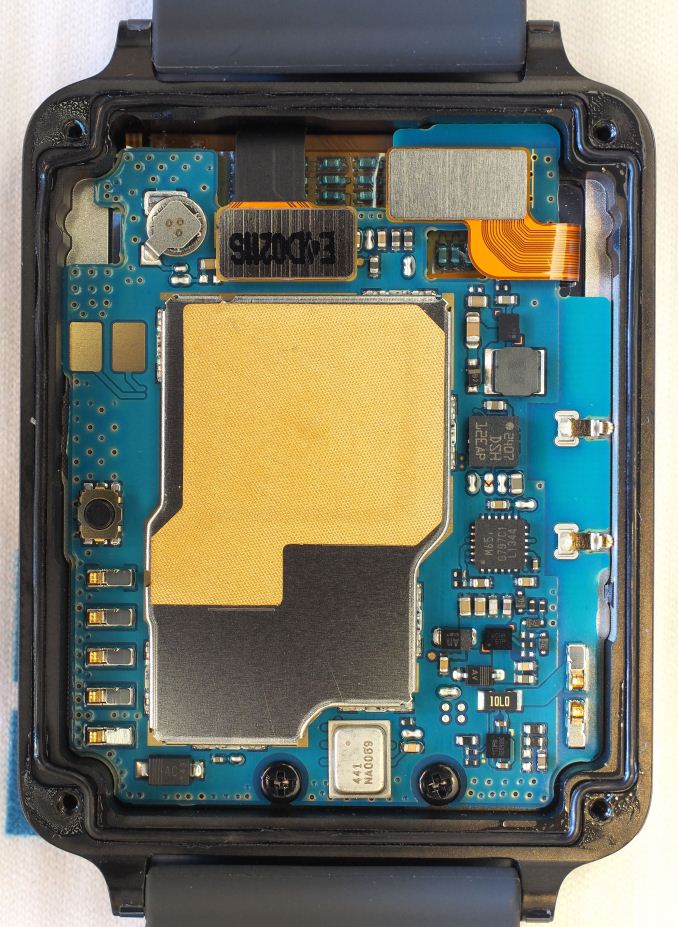
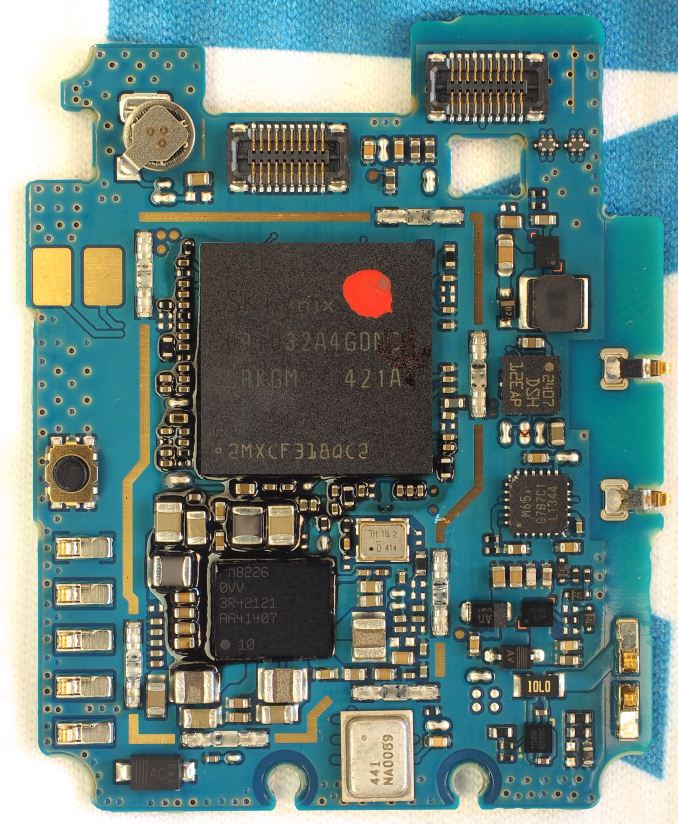
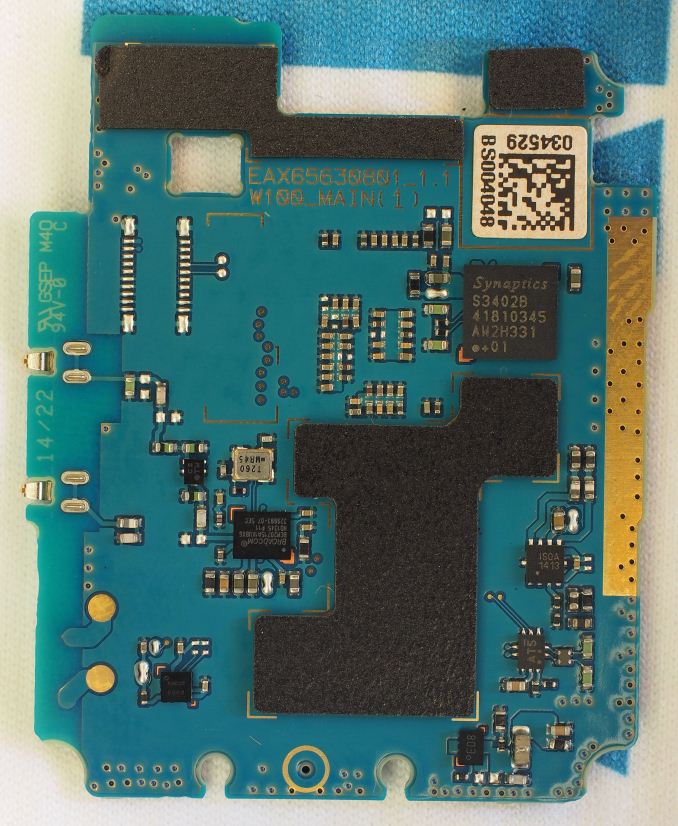
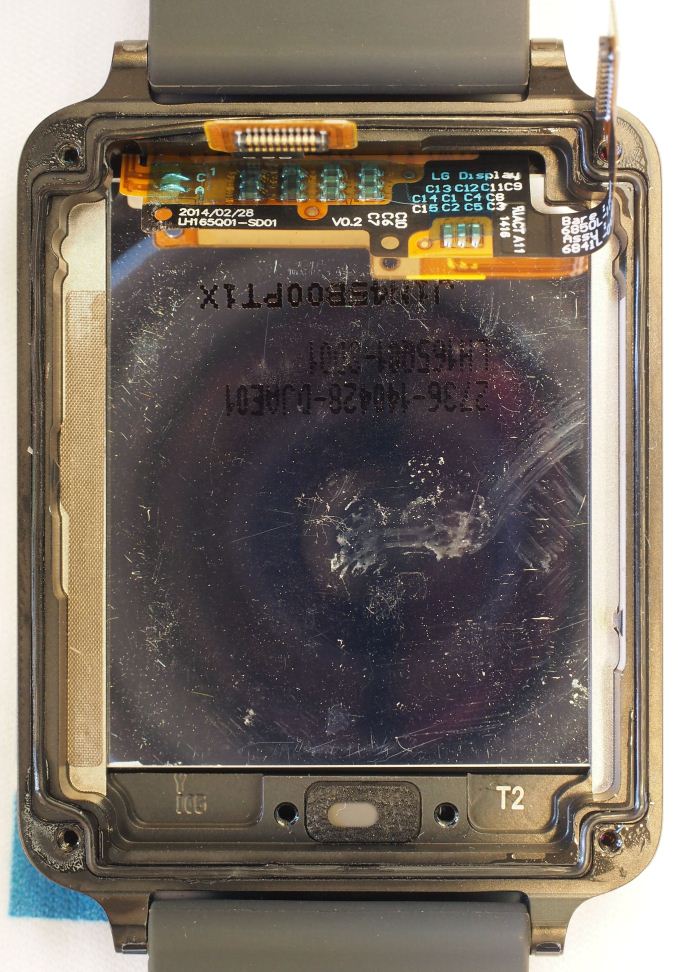






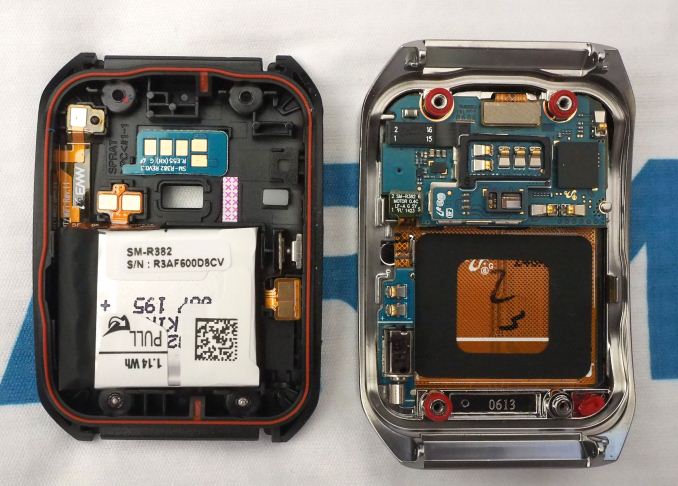
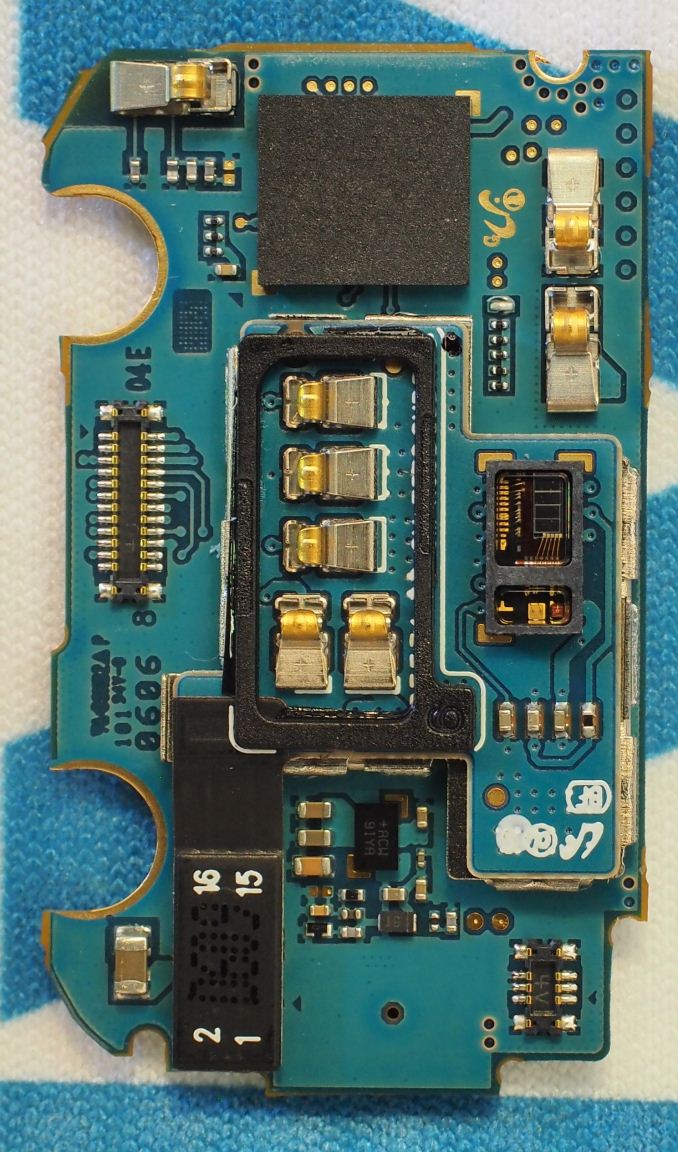
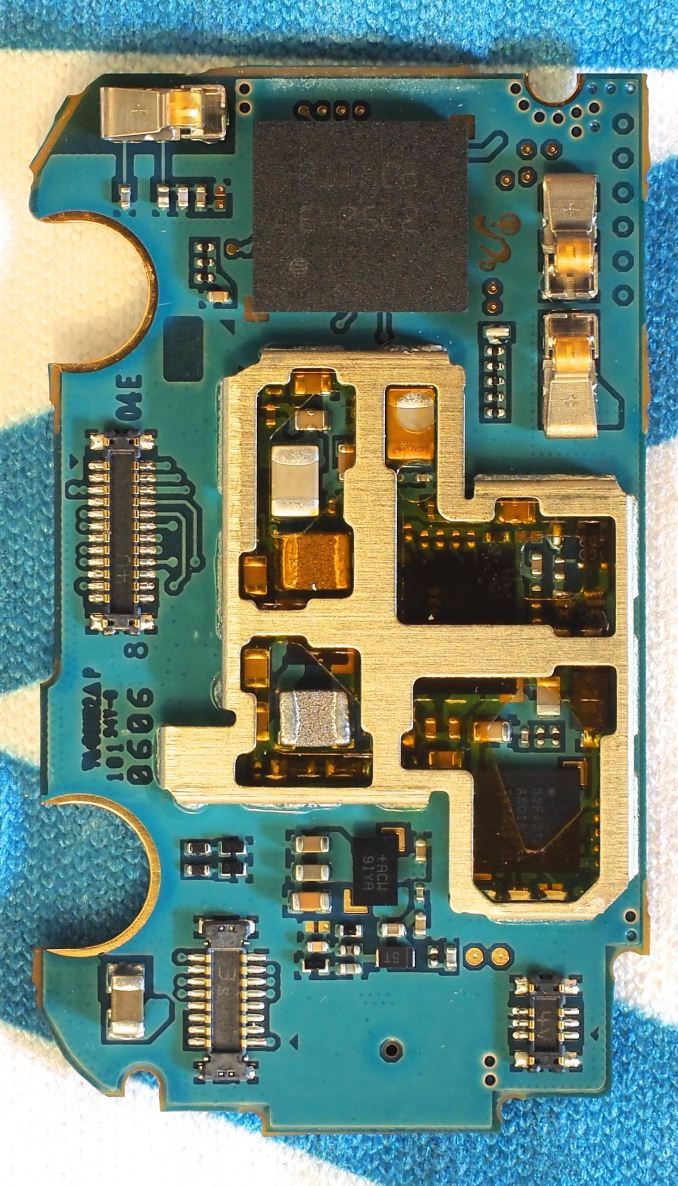
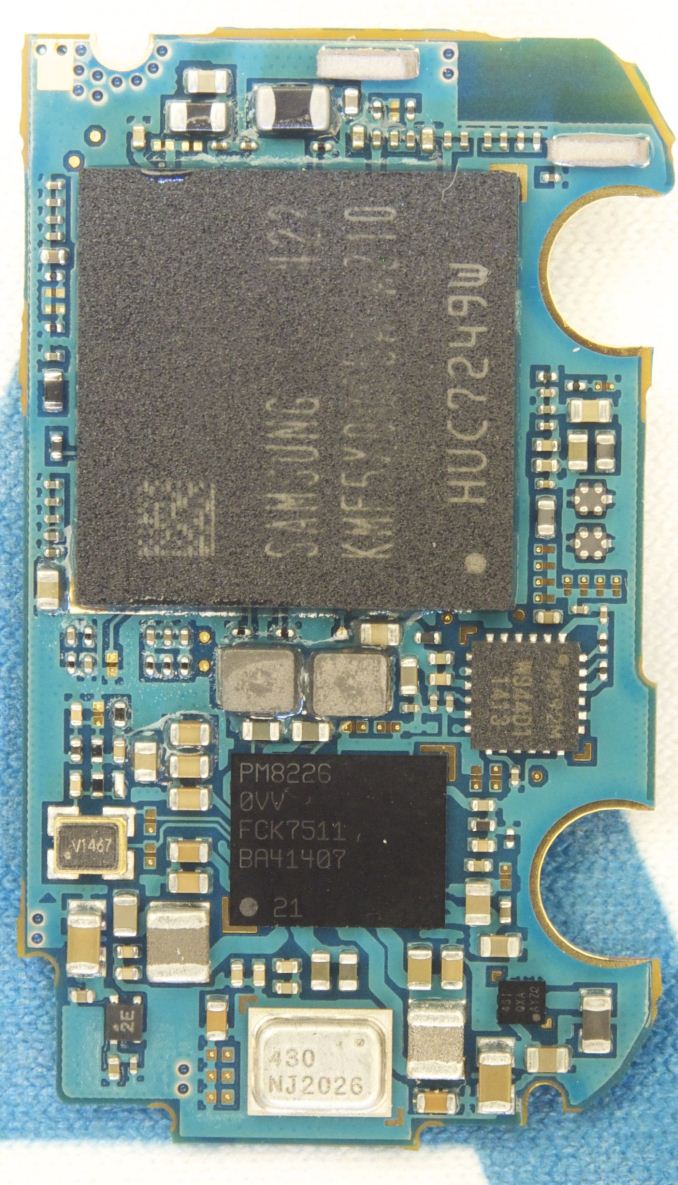















26 Comments
View All Comments
jjj - Tuesday, July 1, 2014 - link
Super lame that they have to use phone parts. A phone SoC , that Synaptics touch, they could easily use something with 2 point touch. They are freaking giants. they could make an effort to do it right. This is not how you sell 10 million units in a quarter and ofc the market won't take off with pathetic hardware , insane pricing and lack of functionality.ciparis - Tuesday, July 1, 2014 - link
"Perhaps split up and distributed into a watch band?"Yes! Lithium Polymer batteries, maybe? So long as it can't explode and blow off your hand...
Icehawk - Tuesday, July 1, 2014 - link
If the battery is in the band then you can't easily swap them out. I know it was mentioned that at least one of these new watches takes standard 22mm bands.I don't get the need for much CPU/GPU power at all - it should be mostly a second display.
kyuu - Tuesday, July 1, 2014 - link
Both of these have swappable bands. Putting any circuitry in the band is a really crap idea no matter how you go about it.It needs enough CPU/GPU to drive the UI. The paired phone isn't going to be rendering the UI elements and animations.
uhuznaa - Thursday, July 3, 2014 - link
Still, CPU requirements are small and the GPU has only very few pixels to throw around (compared to modern smartphones). Using actual smartphone SoCs for these things isn't the best idea when comes to battery life. If you have an actual idea what the thing will do and a long-term plan and can design your own SoC towards that you should be able to get by with less power.sndinc - Thursday, July 3, 2014 - link
My question is simple. Do the watches heat up while on your wrist? Just wondering since sometimes my smart phone seems hot.